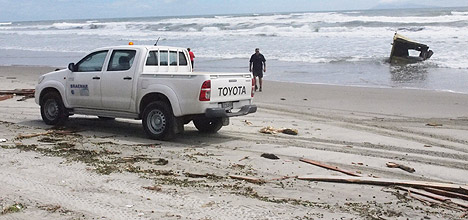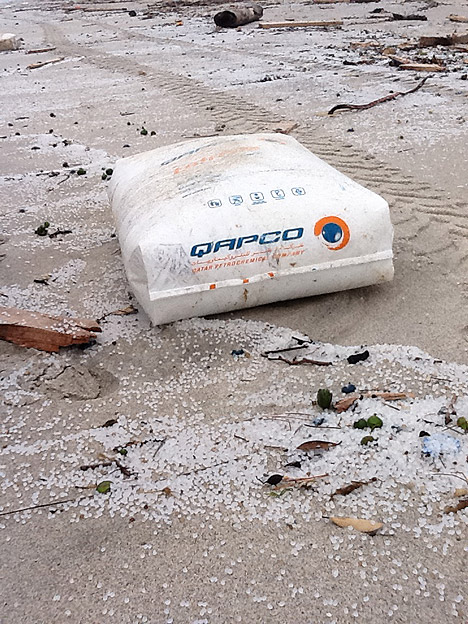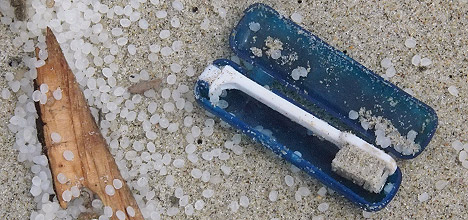Maritime New Zealand is confident the clean-up of plastic beads scattered along the shoreline of Matakana Island is being handled in a fast and efficient manner.
Plastic beads made of translucent polymer used in plastics such as kitchen containers, have littered the ocean side beach of the island since Tuesday.
Plastic beads made of translucent polymer scatter the shoreline of Matakana Island.
This morning MNZ confirmed a container carrying 660 bags of them, weighing 17 tonnes, had been located on the southern part of the island.
MNZ national on scene commander Rob Service is positive environmental specialists Braemar Howells has reacted quickly to recover the beads and is cleaning-up effectively.
'There are plastic beads in containers on Matakana Island and some of these have been released, however, the bulk is still in the container,” says Rob.
Sun Media directors Brian and Clare Rogers located and photographed the beads on the island on Tuesday.
Brian reported the beads to Braemar Howells contractors who were patrolling the beach in a ute at the time.
He says they referred to the bags of beads as ‘milk powder' and said they would investigate.
It appears these patrollers had seen the bags and thought they were the bags containing milk powder which had earlier littered Waihi Beach.

A Braemar Howells patrol on Matakana Island.
Maritime New Zealand's first report to media in which the polymer beads were specifically identified was this morning.
Braemar Howells spokesperson Grant Dyson is unsure of when the beads were first reported to his organisation.
'We have been dealing with the beads today, working to secure the container which is towards the southern end of Matakana Island.”
Grant says more beads have been identified at the north end of Waihi Beach.
He says frontline teams will have been removing the beads as they find them.
'We have prioritised dealing with the beads to prevent any wildlife issues.”
A MNZ spokesperson says the organisation was alerted to the beads on Wednesday and proceeded to inform Braemar Howells.
At that time MNZ states Braemar was aware of the beads and their location, but they were not deemed a clean-up priority as they were ‘not toxic to humans'.
However, at a public meeting at midday on Thursday, concerns were raised about the impact of the beads on wildlife and clean-up operations were heightened.
Rob says the threat to wildlife is minimal as birds will need to ingest a significant amount of beads to be adversely affected.
Grant says the beads are being picked up by hand, but plans are underway to vacuum the remaining beads from the beach.
'We are looking at vacuuming them up in some way; they are being collected in the meantime.”
Grant says people who find beads along Waihi Beach should alert Braemar or collect the beads themselves and place them in one of the 10 skips along Waihi Beach identified for Rena waste.
'These are completely harmless to people, they are used in plastics manufacture and are going to do no harm unless you try to swallow them.”

Beads and one of the bags they were contained in aboard the Rena.



1 comment
TV old news
Posted on 13-01-2012 18:37 | By The author of this comment has been removed.
I just saw this as the lead story on TV, yet I read about it on SunLive on Tuesday, HELLO! SunLive was all over this, yet clearly none of the organisatins that should have been acting did anything for 4 days!How much wildlife was affected during that time?
Leave a Comment
You must be logged in to make a comment.